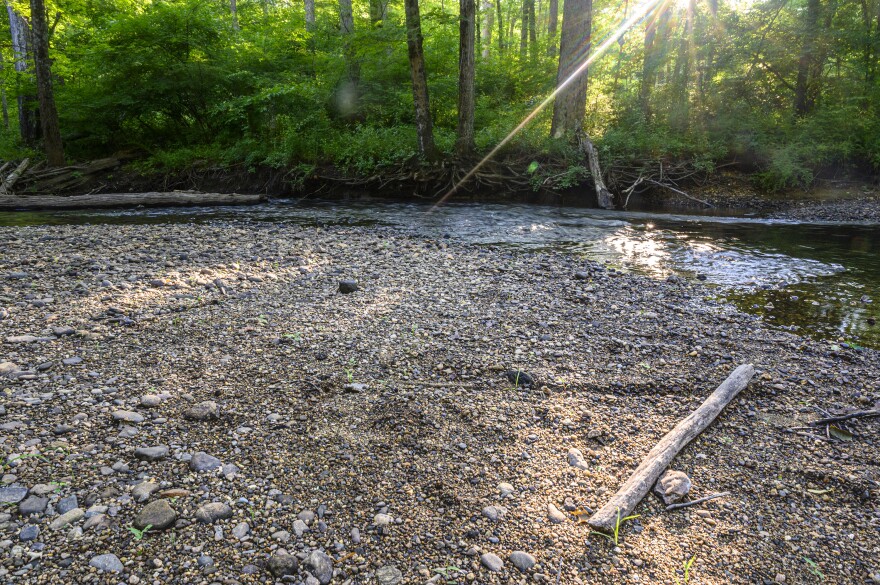Connecticut’s drought conditions are expected to persist over the next couple of weeks, thanks in part to a week of mostly dry weather across New England.
But the current drought is only impacting parts of the state, and overall drought conditions in Connecticut are still relatively mild compared to previous years.
“The most recent drought before this one was in 2020,” said Garett Argianas, a meteorologist with Connecticut Public. “That drought was more significant than what we’re experiencing up to this point now.”
In 2020, a small sliver of eastern Connecticut near the Rhode Island border was hard-hit by dry weather. But a drought beginning in 2016 and extending into 2017 was much worse, enveloping large swaths of central and western Connecticut and prompting state officials to issue drought advisories.
So far, this year’s drought isn’t nearly as bad as those two. But parts of Connecticut are still experiencing dry weather.
In its latest weekly report, the U.S. Drought Monitor, which monitors conditions nationwide, said parts of central and southeastern Connecticut were at the lowest drought level: “abnormally dry.”
Conditions were slightly worse in north-central and in eastern Connecticut, although current data do not account for recent spotty rainfall events across the state.
Argianas said he expects that rain over the next two weeks should be normal, which won’t close the rainfall deficit but will hopefully blunt the threat of the drought getting significantly worse.
“We’re likely to still be dealing with these drought conditions over the next couple of weeks,” Argianas said. “But the hope is that we at least get some of these thunderstorms through at times to help really bring down that deficit as much as we can.”
Officials react to rainfall deficits
Issuing an all-encompassing picture of drought conditions in Connecticut is difficult.
Drought conditions — like summer rainfall events — are by their nature spotty. Some portions of the state experienced rain this week, but Argianas said other spots remained dry.
Still, those conditions are prompting officials to react. The state’s Interagency Drought Work Group met Wednesday afternoon and voted unanimously to move the entire state into a stage 2 “incipient drought” alert level.
At that level, residents and businesses are asked to voluntarily do things to cut down on water use, such as reducing lawn waterings, fixing leaky plumbing and following any additional conservation requests issued by water suppliers or municipalities.
In short, a more widespread drought could be coming, the group said, but it’s not here yet.
That recommendation now goes to Governor Ned Lamont for his approval.
Local leaders are also issuing warnings related to the dry weather.
Residents in the Pomperaug River Basin in west-central Connecticut are being asked to voluntarily reduce their water usage because of low flows in the river. Southbury is issuing a water warning even though the U.S. Drought Monitor said the western part of the state isn’t officially in drought conditions.
Still, drinking water reservoirs are looking good. Eric Lindquist is with the state Office of Policy and Management and spoke during the meeting of the state’s Interagency Drought Work Group.
“Reservoirs are looking really healthy still,” Lindquist said. “So that’s a bit of good news there.”
John Mullaney, with the U.S. Geological Survey, said some groundwater levels are declining, which is having an impact on wells in Tolland, Windham and New London counties.
“About this time last year we got some serious rain that actually caused [a] recharge in July, but that’s fairly unusual,” Mullaney said. “I don’t know that I expect to see that with the forecast unless we get something like a tropical storm.”
Britt Westergard, with the National Weather Service, told members of the state’s work group that there could be some good news in the seasonal outlook, which anticipates rainfall in July, August and September.
“[The] seasonal outlook does have a slice of above-normal precipitation,” Westergard said.
Connecticut Public Radio’s Jennifer Ahrens contributed to this report.
Copyright 2022 Connecticut Public Radio. To see more, visit Connecticut Public Radio.


